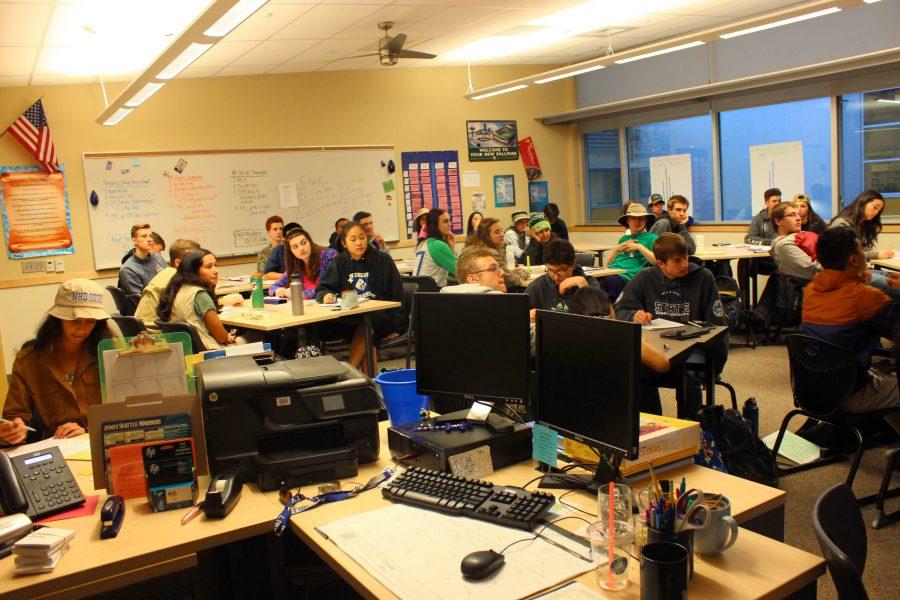36 students, one teacher: current AP Calculus BC stands largest in Liberty history
November 4, 2016
This year, math teacher Angie Kruzich teaches what may currently be the biggest, and ironically the most difficult, academic class at Liberty: AP Calculus BC, 3rd period. The class contains a total of 36 juniors and seniors, along with senior Dhamanpreet Kaur as math tutor.
Originally, 40 students registered for the AP Calculus class. However, by the time the school year began, the class size had dropped to 36 students.
Kruzich believes that having a class this large will be detrimental to the learning of her students, as well as to the quality and amount of content that she is able to teach.
“Instead of having 7 or 8 table groups, I have 9,” Kruzich said. “It is incredibly difficult for me to get all the way around the room when we are doing group activities, which we do quite a lot in this class.”
In order to deal with this issue, Kruzich contemplated changing the style of her lessons to incorporate more lectures. However, she determined that this would not be the most beneficial for her students, so she decided to leave her classes the way they were.
“If I’m just lecturing, I lose people; it’s so easy to get lost and slip through the cracks if you’re in the back of the room,” Kruzich said. “And, instead of 25 kids talking, you have 36 kids talking, so it takes 10 times longer to quiet them down.”
“Last year, my AP Calculus BC class only had 16 students, so it was a lot smaller,” Kaur said. “Now, it is very chaotic all the time; they actually had to bring in extra desks to fit everyone, while most of the classroom wasn’t used last year.”
Over her years of teaching AP Calculus BC, Kruzich has had many varying levels of students in the classroom at once. In 2003, the first year the class was offered at Liberty, there were 13 students in her class. Another year, she had two class periods, with 30 students in one period, and 9 in the other.
“I’m seeing a pattern, and I’m seeing that the smaller the AP class, the higher the AP exam scores, and the larger the class, the lower the scores,” Kruzich said.
However, not everyone believes that the size of this class is necessarily a bad thing.
“I think it makes things more fun, because there are so many different personalities in the room at once,” senior Cameron Lautenslager said. “I don’t really think it will make it harder to learn things, because if you pay attention, you’re still able to learn it just fine.”
Kruzich strongly believes that all classes, particularly in the math department, should have a limit of 30 students, or fewer.
“The district is supposed to be giving us extra FTE in order to keep math classes smaller because there is a huge emphasis throughout the nation to help kids learn math better,” Kruzich said. “And having larger classes definitely does not help that.”



